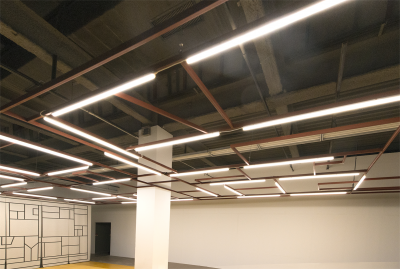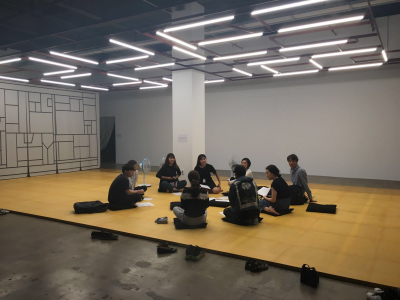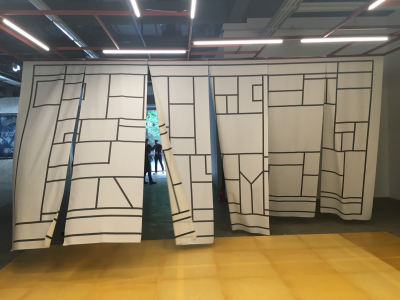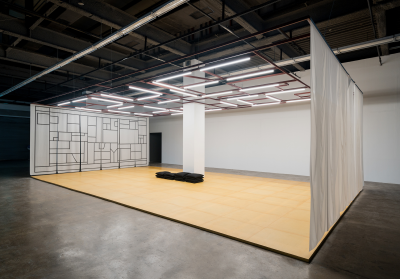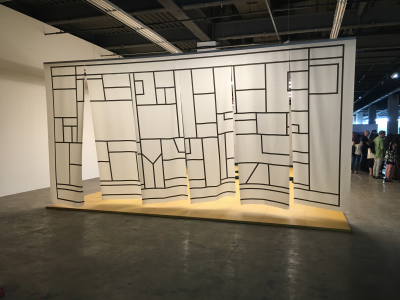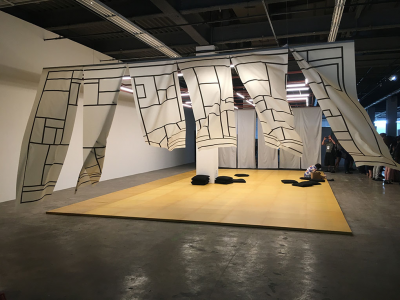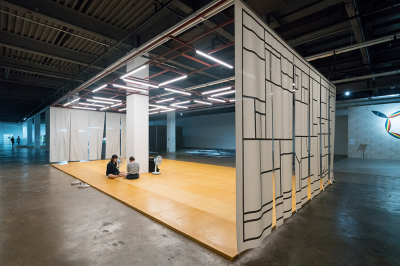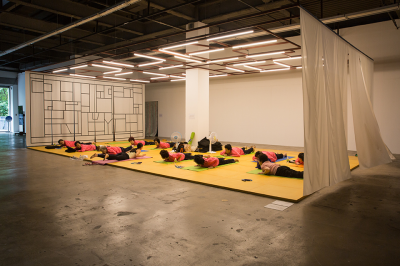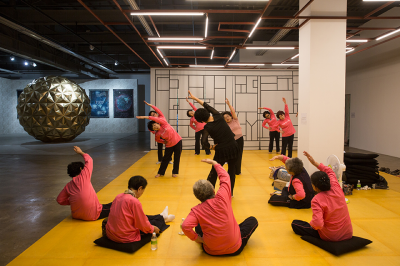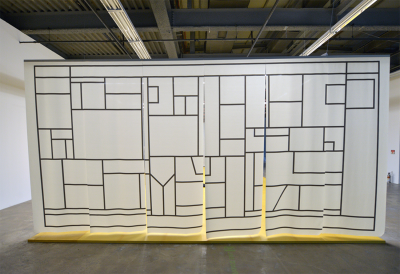
How does a straight line feel?
11th GwangJu Biennale:
The Eighth Climate (What Does Art Do?)
GwangJu, South Korea
2 September–6 November 2016
How does a straight line feel? (GwangJu)How does a straight line feel? (in collaboration with the May Mothers) brings together experiences that tend to be pushed away, while being influential on states of being. Engulfed in the present, we easily loose track of the past, and the potential to see lines to the future gets lost or out of sight. How can narratives activate a different thinking and experiencing of the world, bringing new imaginative possibilities? How can the creation of spaces of experience be used to re-orient the horizon line of language and communication?
Light influences what we see and how we see it. New developments in lighting techniques are changing the experience of our urban nightscapes, while the transition to LED-lid environments enables economic efficiency in agriculture, and has a capacity to act upon human behaviour and well-being.
The May Mothers in GwangJu is a group of women that formed an organization since the GwangJu uprising in 1980, to process the trauma (personal as well as with regards to the society and community at large) caused by the uprising. They invested their lives in continuously speaking about the uprising, taking responsibility for the history of the young democratic state of South Korea.
They get together on a weekly basis, and they share their experiences and stories with others, as to prevent loss of memory related to the uprising. For the GwangJu Biennale, Bik Van der Pol have created an environment for the May Mothers, where they have invited them to transfer their regular collective activities to this space, thus creating a ground for sharing and activating their narratives in light of the future, generating what is underexposed. The activities by the May Mothers take place every Monday and Wednesday 11am-14.30pm from Sept 5-Nov 6, except on public holidays. On other days, the platform is used by the artist-initiative Miti-Ugro and reading groups.
The floor is of the space covered by hanji, a traditional paper. The design of the curtain and the grid of LED lights are based on the Korean language Hangul and pojagi , the embroidered quilts, taking inspiration from the speculation on the relationship between the qualities of traditional Korean patterns, and the formal elements that compose the Korean alphabet. Light, textile and texture is proposed here as both abstraction and that what forms language. Together they create an environment that affects experience through the influence of weaving, specific wavelengths, and the potential connective qualities of language and speech, all resonating in this space.
